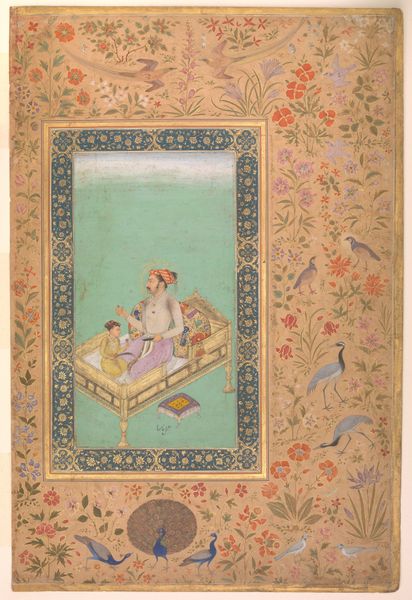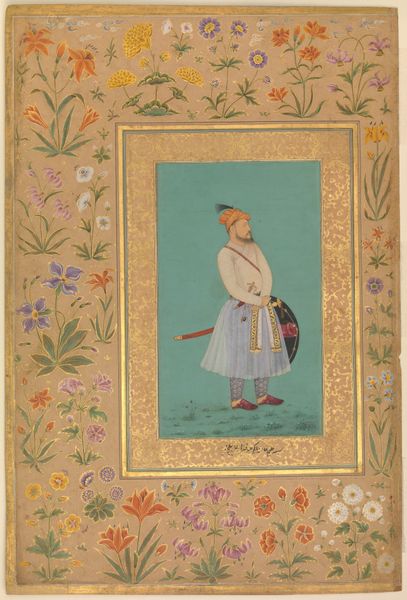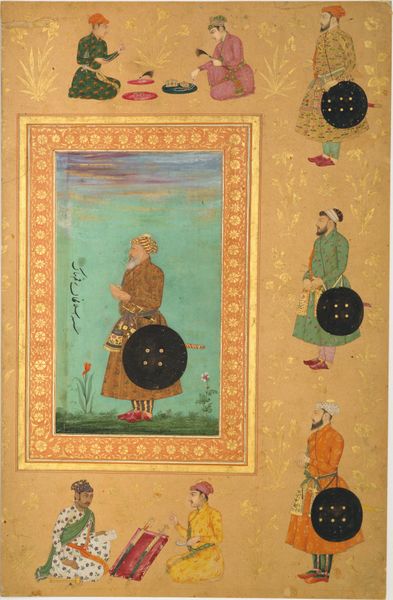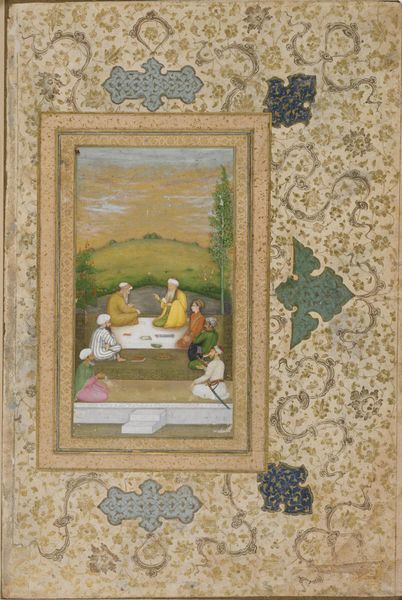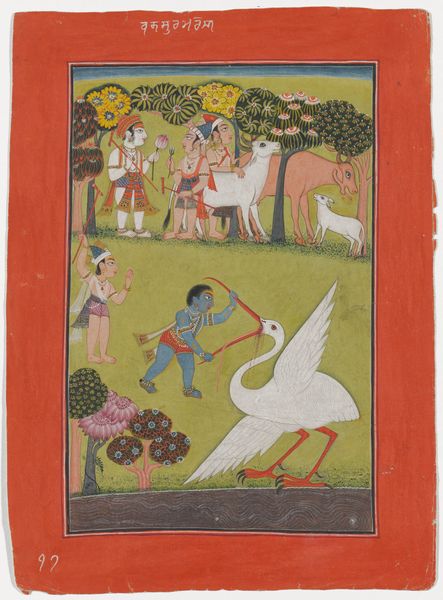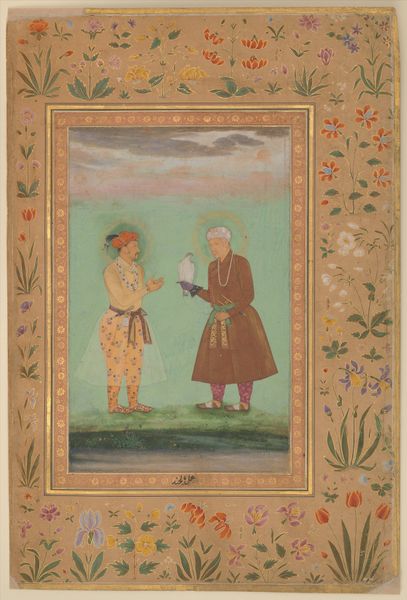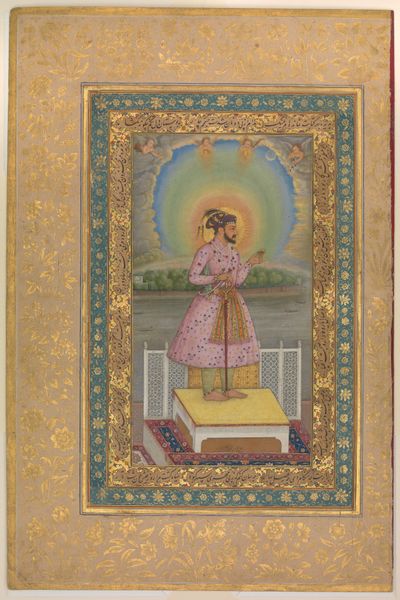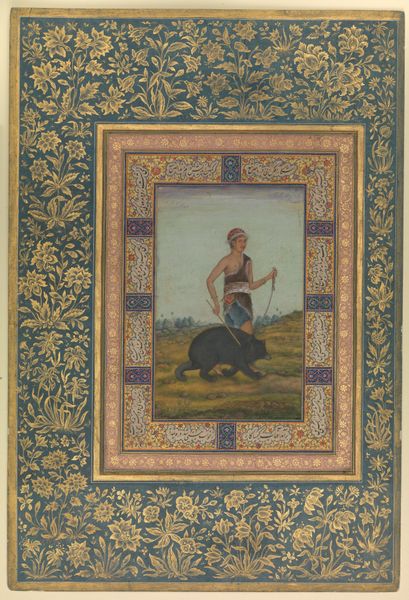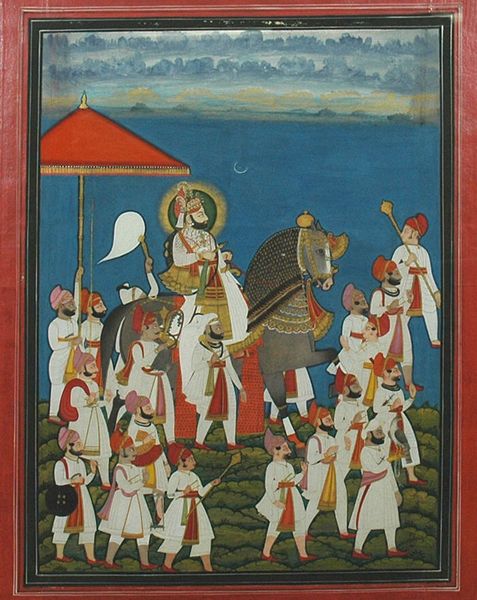
"Akbar With Lion and Calf", Folio from the Shah Jahan Album 1505 - 1655
gouache, mural
portrait
gouache
water colours
gouache
landscape
figuration
men
islamic-art
history-painting
mural
miniature
Dimensions: H. 15 5/16 in. (38.9 cm) W. 10 1/8 in. (25.7 cm)
Copyright: Public Domain
Editor: This gouache artwork is titled "Akbar With Lion and Calf," a folio from the Shah Jahan Album, dating roughly from 1505 to 1655, currently held at the Met. I’m struck by how it juxtaposes the earthly and the divine, with those chubby cherubs floating above. What do you make of this image, with its rather odd combination of figures? Curator: It's a fascinating example of Mughal painting and the construction of imperial power. Think about the time this was created – a period of significant cultural exchange. The Mughal emperors, though Muslim, ruled over a largely Hindu population, and the art produced reflected this syncretism. What do you notice about Akbar's depiction, and his relationship to the animals? Editor: Well, he has this saintly halo and seems completely at ease. The lion and calf lying peacefully together… It's all a bit idealized, right? Like a vision of perfect rule? Curator: Exactly. It's an allegory of Akbar's reign. The lion and calf represent opposing forces living in harmony, symbolizing peace and justice under his rule. And notice the cherubs – a European motif adopted into the Mughal visual vocabulary. This suggests Akbar as divinely sanctioned. It's all carefully crafted imagery for public consumption. Editor: So, it’s not necessarily a realistic portrait but a piece of propaganda, in a way? Curator: In a way, yes, though that term can be a bit loaded. It’s carefully constructed to project an image of just and divinely favored leadership. This "Shah Jahan Album," from which this folio comes, was, itself, a product of imperial patronage, reflecting carefully selected and presented imagery. Does considering its purpose change how you see the artwork? Editor: Definitely. It makes me think more critically about what’s being shown, and especially, what’s being left out. It really sheds light on how art can function as a political tool. Curator: Precisely. Looking at art this way allows us to understand not just aesthetics, but the complex power dynamics at play in shaping culture and history. Editor: I'll never look at a historical portrait the same way again. Thanks for pointing that out.
Comments
No comments
Be the first to comment and join the conversation on the ultimate creative platform.
